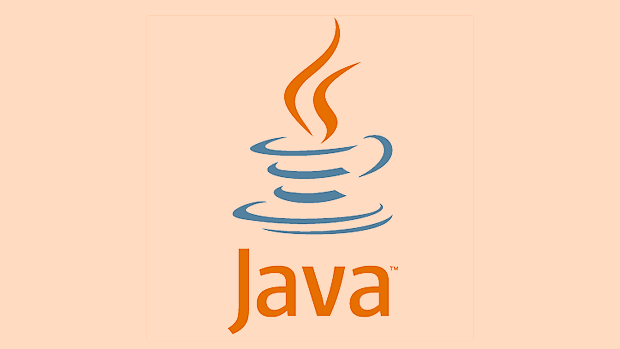The Strategy design pattern in Java allows defining a family of algorithms, encapsulating each one, and making them interchangeable to change behavior at runtime. 1. Define a strategy interface that declares the method(s) all strategies must implement. 2. Implement concrete strategies that provide specific behavior. 3. Create a context class that uses a strategy reference to delegate work. 4. Use the pattern in your application by dynamically setting strategies at runtime, promoting flexibility and maintainability while avoiding conditional logic.

Implementing the Strategy design pattern in Java is a clean way to define a family of algorithms, encapsulate each one, and make them interchangeable. It lets you change behavior at runtime without modifying the class that uses those behaviors. This is especially useful when you want to avoid messy conditional logic (like long if-else chains) and promote code reuse.

What Is the Strategy Pattern?
The Strategy pattern involves three main components:
- Context – the class that uses a strategy.
- Strategy Interface – defines the contract for all supported algorithms.
- Concrete Strategies – implementations of the strategy interface.
This separation allows you to plug in different behaviors dynamically.

Step-by-Step Implementation
Let’s walk through how to implement this with a simple example: payment methods.
1. Define the Strategy Interface
Start by creating an interface that declares the method(s) your strategies will implement.

public interface PaymentStrategy {
void pay(int amount);
}This sets the contract: any class implementing PaymentStrategy must provide a pay() method.
2. Implement Concrete Strategies
Now create classes that implement this interface. Each represents a different payment method.
public class CreditCardPayment implements PaymentStrategy {
@Override
public void pay(int amount) {
System.out.println("Paid " amount " using Credit Card");
}
}
public class PayPalPayment implements PaymentStrategy {
@Override
public void pay(int amount) {
System.out.println("Paid " amount " via PayPal");
}
}These are two concrete strategies. You can add more later without affecting existing code.
3. Create the Context Class
The context holds a reference to a strategy and delegates work to it.
public class ShoppingCart {
private PaymentStrategy paymentStrategy;
public void setPaymentStrategy(PaymentStrategy paymentStrategy) {
this.paymentStrategy = paymentStrategy;
}
public void checkout(int totalAmount) {
if (paymentStrategy == null) {
throw new IllegalStateException("No payment strategy set");
}
paymentStrategy.pay(totalAmount);
}
}This class doesn't care which payment method is used — it just calls the strategy's pay() method.
4. Use It in Your Application
Finally, wire everything together in your main application.
public class MainApp {
public static void main(String[] args) {
ShoppingCart cart = new ShoppingCart();
// Choose strategy at runtime
cart.setPaymentStrategy(new CreditCardPayment());
cart.checkout(150);
cart.setPaymentStrategy(new PayPalPayment());
cart.checkout(200);
}
}You can switch strategies on the fly, making your system flexible and easy to extend.
Tips When Using Strategy Pattern
Here are some practical things to keep in mind:
- Use interfaces or abstract classes for strategy definitions — it makes switching easier.
- Avoid tight coupling between the context and concrete strategies.
- Encapsulate variations in behavior behind strategy classes — this keeps your code cleaner.
- Consider using dependency injection to pass strategies into the context.
- If strategies need access to data from the context, you can pass it explicitly through method parameters.
Also, be careful not to overuse this pattern. If your strategies are very simple or rarely change, it might be overkill.
Summary
So, implementing the Strategy pattern in Java boils down to defining an interface, creating multiple implementations, and letting a context object use them interchangeably. It helps reduce conditionals, improves maintainability, and supports open/closed principle.
That’s basically it. Not too hard once you get the structure right.
The above is the detailed content of How to implement the Strategy design pattern in Java?. For more information, please follow other related articles on the PHP Chinese website!

Hot AI Tools

Undress AI Tool
Undress images for free

Undresser.AI Undress
AI-powered app for creating realistic nude photos

AI Clothes Remover
Online AI tool for removing clothes from photos.

Clothoff.io
AI clothes remover

Video Face Swap
Swap faces in any video effortlessly with our completely free AI face swap tool!

Hot Article

Hot Tools

Notepad++7.3.1
Easy-to-use and free code editor

SublimeText3 Chinese version
Chinese version, very easy to use

Zend Studio 13.0.1
Powerful PHP integrated development environment

Dreamweaver CS6
Visual web development tools

SublimeText3 Mac version
God-level code editing software (SublimeText3)

Hot Topics
 Difference between HashMap and Hashtable?
Jun 24, 2025 pm 09:41 PM
Difference between HashMap and Hashtable?
Jun 24, 2025 pm 09:41 PM
The difference between HashMap and Hashtable is mainly reflected in thread safety, null value support and performance. 1. In terms of thread safety, Hashtable is thread-safe, and its methods are mostly synchronous methods, while HashMap does not perform synchronization processing, which is not thread-safe; 2. In terms of null value support, HashMap allows one null key and multiple null values, while Hashtable does not allow null keys or values, otherwise a NullPointerException will be thrown; 3. In terms of performance, HashMap is more efficient because there is no synchronization mechanism, and Hashtable has a low locking performance for each operation. It is recommended to use ConcurrentHashMap instead.
 Why do we need wrapper classes?
Jun 28, 2025 am 01:01 AM
Why do we need wrapper classes?
Jun 28, 2025 am 01:01 AM
Java uses wrapper classes because basic data types cannot directly participate in object-oriented operations, and object forms are often required in actual needs; 1. Collection classes can only store objects, such as Lists use automatic boxing to store numerical values; 2. Generics do not support basic types, and packaging classes must be used as type parameters; 3. Packaging classes can represent null values ??to distinguish unset or missing data; 4. Packaging classes provide practical methods such as string conversion to facilitate data parsing and processing, so in scenarios where these characteristics are needed, packaging classes are indispensable.
 What are static methods in interfaces?
Jun 24, 2025 pm 10:57 PM
What are static methods in interfaces?
Jun 24, 2025 pm 10:57 PM
StaticmethodsininterfaceswereintroducedinJava8toallowutilityfunctionswithintheinterfaceitself.BeforeJava8,suchfunctionsrequiredseparatehelperclasses,leadingtodisorganizedcode.Now,staticmethodsprovidethreekeybenefits:1)theyenableutilitymethodsdirectly
 How does JIT compiler optimize code?
Jun 24, 2025 pm 10:45 PM
How does JIT compiler optimize code?
Jun 24, 2025 pm 10:45 PM
The JIT compiler optimizes code through four methods: method inline, hot spot detection and compilation, type speculation and devirtualization, and redundant operation elimination. 1. Method inline reduces call overhead and inserts frequently called small methods directly into the call; 2. Hot spot detection and high-frequency code execution and centrally optimize it to save resources; 3. Type speculation collects runtime type information to achieve devirtualization calls, improving efficiency; 4. Redundant operations eliminate useless calculations and inspections based on operational data deletion, enhancing performance.
 What is an instance initializer block?
Jun 25, 2025 pm 12:21 PM
What is an instance initializer block?
Jun 25, 2025 pm 12:21 PM
Instance initialization blocks are used in Java to run initialization logic when creating objects, which are executed before the constructor. It is suitable for scenarios where multiple constructors share initialization code, complex field initialization, or anonymous class initialization scenarios. Unlike static initialization blocks, it is executed every time it is instantiated, while static initialization blocks only run once when the class is loaded.
 What is the Factory pattern?
Jun 24, 2025 pm 11:29 PM
What is the Factory pattern?
Jun 24, 2025 pm 11:29 PM
Factory mode is used to encapsulate object creation logic, making the code more flexible, easy to maintain, and loosely coupled. The core answer is: by centrally managing object creation logic, hiding implementation details, and supporting the creation of multiple related objects. The specific description is as follows: the factory mode handes object creation to a special factory class or method for processing, avoiding the use of newClass() directly; it is suitable for scenarios where multiple types of related objects are created, creation logic may change, and implementation details need to be hidden; for example, in the payment processor, Stripe, PayPal and other instances are created through factories; its implementation includes the object returned by the factory class based on input parameters, and all objects realize a common interface; common variants include simple factories, factory methods and abstract factories, which are suitable for different complexities.
 What is the `final` keyword for variables?
Jun 24, 2025 pm 07:29 PM
What is the `final` keyword for variables?
Jun 24, 2025 pm 07:29 PM
InJava,thefinalkeywordpreventsavariable’svaluefrombeingchangedafterassignment,butitsbehaviordiffersforprimitivesandobjectreferences.Forprimitivevariables,finalmakesthevalueconstant,asinfinalintMAX_SPEED=100;wherereassignmentcausesanerror.Forobjectref
 What is type casting?
Jun 24, 2025 pm 11:09 PM
What is type casting?
Jun 24, 2025 pm 11:09 PM
There are two types of conversion: implicit and explicit. 1. Implicit conversion occurs automatically, such as converting int to double; 2. Explicit conversion requires manual operation, such as using (int)myDouble. A case where type conversion is required includes processing user input, mathematical operations, or passing different types of values ??between functions. Issues that need to be noted are: turning floating-point numbers into integers will truncate the fractional part, turning large types into small types may lead to data loss, and some languages ??do not allow direct conversion of specific types. A proper understanding of language conversion rules helps avoid errors.






